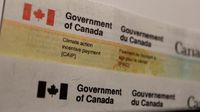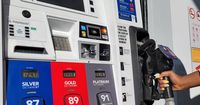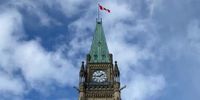Starting today, April 22, 2025, Canadians across most provinces are receiving their final carbon rebates, marking the end of a program that was designed to offset the costs associated with carbon pricing. This payment comes just days before the federal election on April 28, adding a layer of political significance to the financial assistance.
Eligible Canadians who filed their 2024 income tax returns electronically by April 2 will see their Canada Carbon Rebate (CCR) deposited directly into their bank accounts if they registered for direct deposit with the Canada Revenue Agency. For those who did not register, the rebate will be sent via cheque. However, Canadians who filed their tax returns after April 2 will receive their payments once their returns have been assessed.
This final rebate follows the recent scrapping of the consumer carbon pricing, which was officially removed on April 1, 2025. The CCR was initially introduced as a way to return proceeds from the federal fuel charge applied to various fossil fuels and combustible waste—a signature climate policy from former Prime Minister Justin Trudeau. The federal fuel charge was implemented in ten provinces and territories, including Newfoundland and Labrador, Ontario, and Alberta.
Payments vary by province, reflecting the differing impacts of the carbon pricing. For instance, in Alberta, individuals can expect $228, while families of four are eligible for $456. In Ontario, the amounts are $151 for individuals and $302 for families of four. Other provinces see similar variations; Saskatchewan offers $206 for individuals and $412 for families, while New Brunswick provides $165 and $330, respectively. Nova Scotia and Prince Edward Island offer $110 for individuals and $220 for families, with the rural supplement already included for the latter. In Newfoundland and Labrador, individuals will receive $149 and families $298.
However, the timing of these payments has raised eyebrows among economists and political observers. Robin Boadway, an emeritus professor of economics at Queen's University, voiced concerns about the inconsistency of the government's approach. He argued that the rebate should have been canceled concurrently with the elimination of the carbon pricing. Boadway explained, "Most people don’t realize that when they get this rebate cheque, it’s not actually a rebate cheque in the meaningful sense of the word because it’s not being covered by carbon tax revenues anymore. It’s just like a free handout that people are getting."
When asked for a response to Boadway's critique, the Department of Finance Canada directed inquiries to a website detailing recent changes to the CCR, stating, "During the election period – the Caretaker period – we cannot comment on policy positions, including matters relating to tax policy." This response reflects the government's cautious stance as it navigates the political landscape leading up to the election.
The CCR program, which has been estimated to cost between $2.7 and $3 billion, was designed to provide some financial relief to Canadians as they faced higher costs associated with carbon pricing. Yet, with the elimination of the carbon tax, the rationale for the rebate has come under scrutiny. Critics argue that continuing the payments without a corresponding tax to fund them undermines the program's original intent.
The final carbon rebates are thus not just a financial transaction; they are emblematic of a larger debate about climate policy, government spending, and electoral strategy. As Canadians receive these payments, many will undoubtedly reflect on the implications of the government's recent decisions and how they align with their views on climate change and fiscal responsibility.
In conclusion, the rollout of the final carbon rebates highlights the intersection of economic policy and electoral politics in Canada. With just days until the federal election, how voters perceive this financial assistance may significantly influence their choices at the polls.








